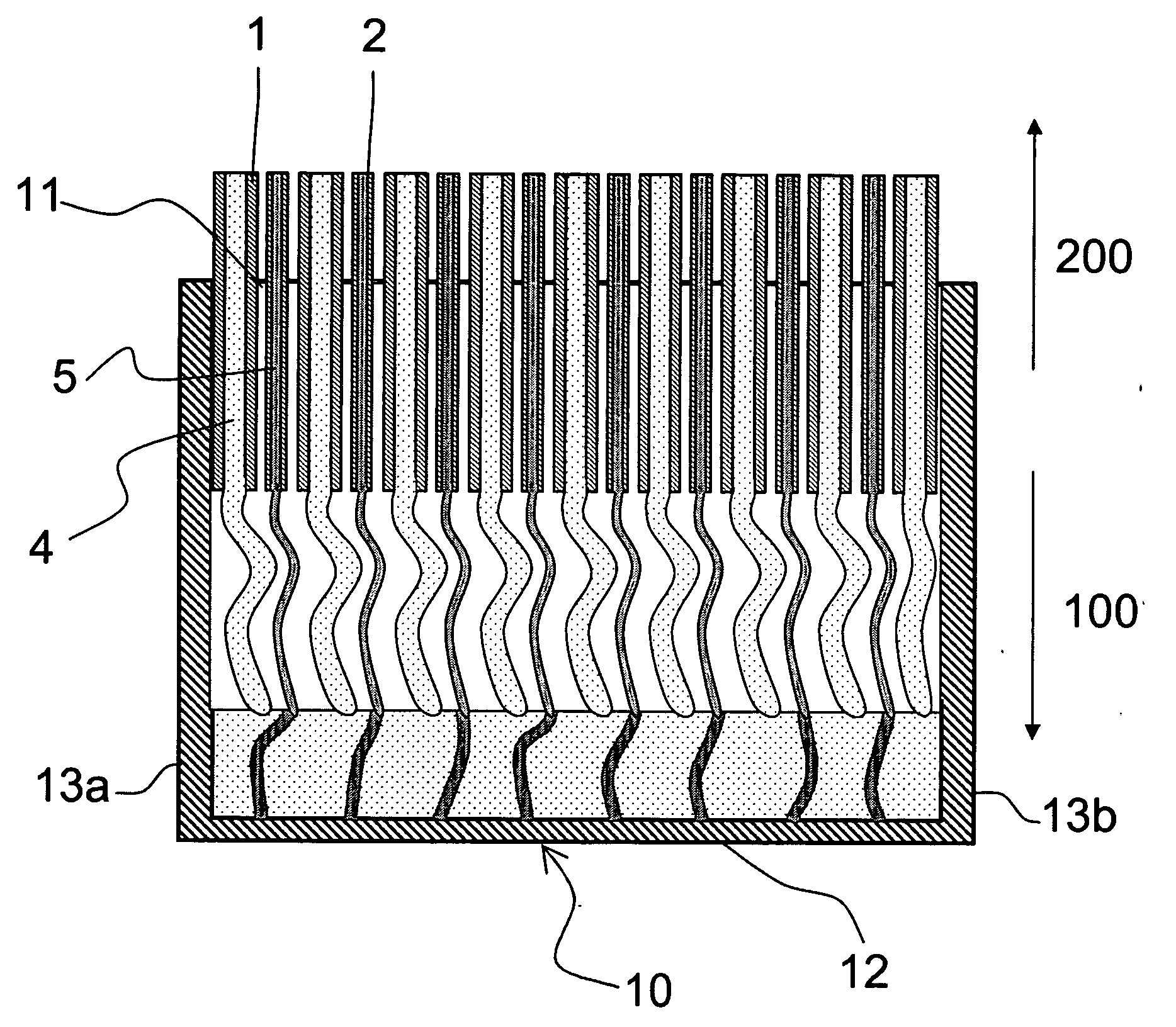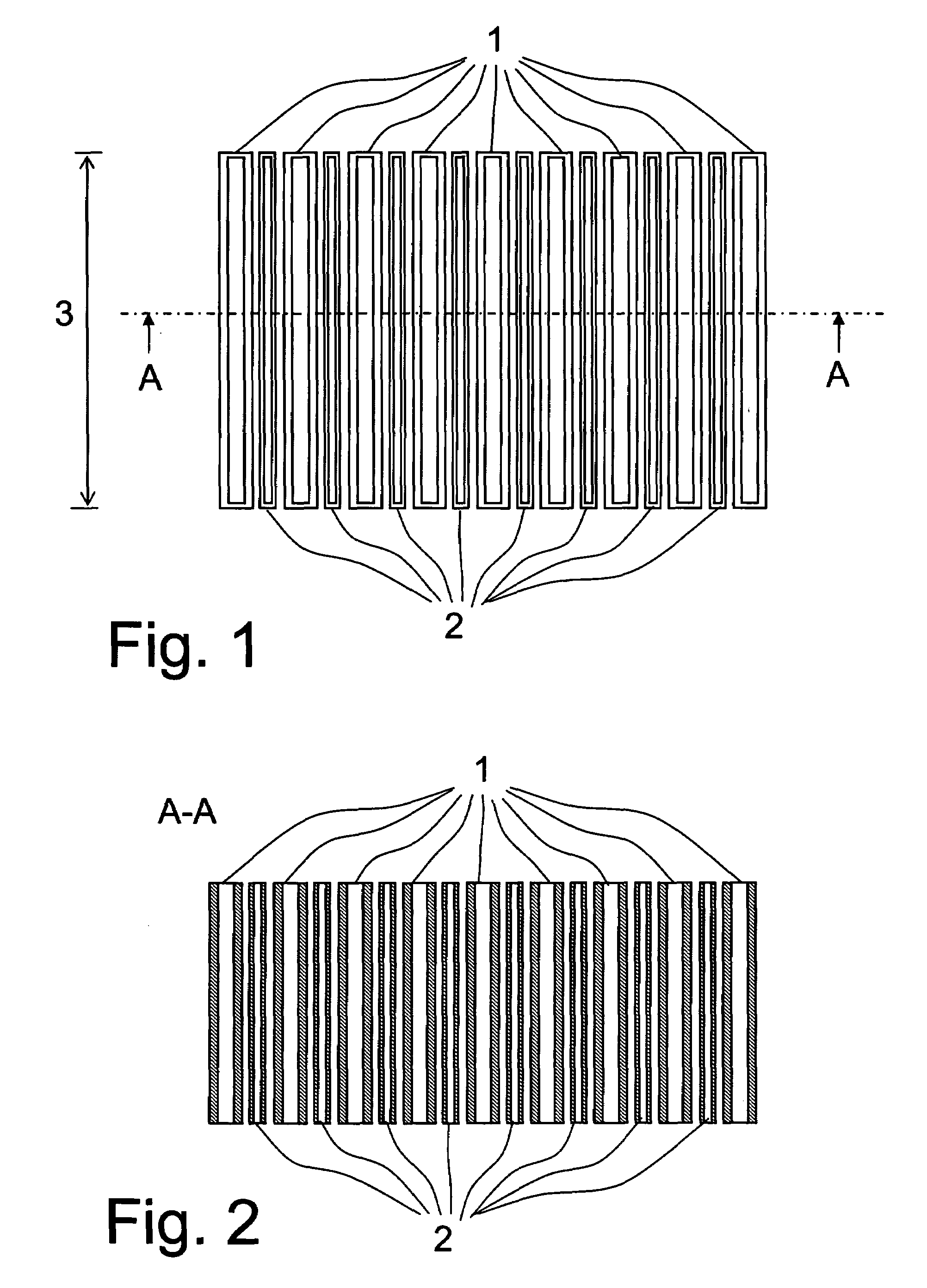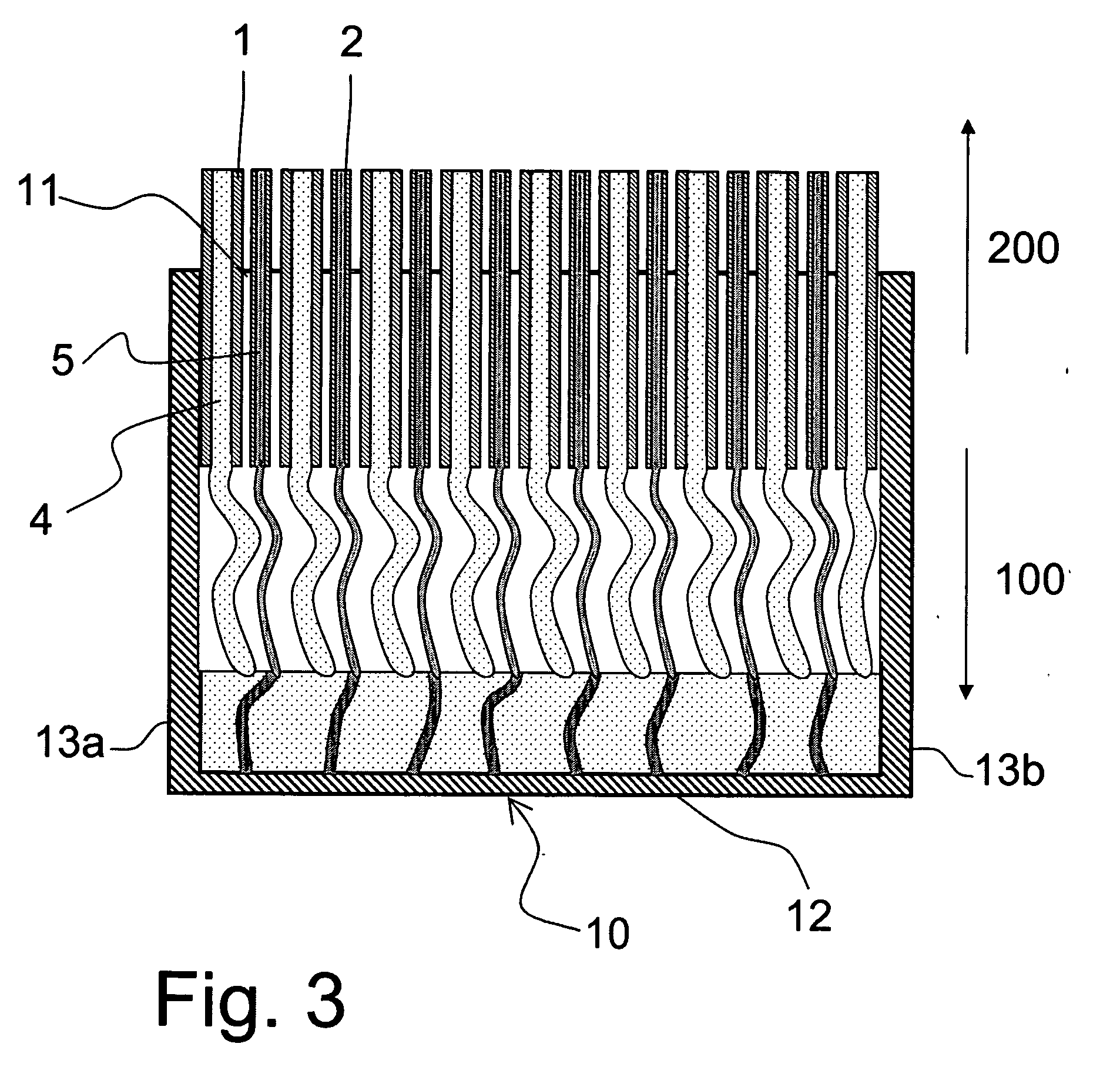Frozen confection
a technology of confections and inclusions, applied in the field of frozen confections, can solve the problems of uneven distribution of inclusions within containers, uneven inclusion distribution of scoops, and uneven distribution of inclusions in containers, and achieve the effect of facilitating the distribution of inclusions and viscosity of confection materials
- Summary
- Abstract
- Description
- Claims
- Application Information
AI Technical Summary
Benefits of technology
Problems solved by technology
Method used
Image
Examples
example
[0055]A frozen confection was produced substantially as described in the foregoing detailed description except the number of outlets (1) for confection material was 8 and the number of outlets (2) for inclusion material was 7. The confection material was aerated ice cream extruded at a temperature of −6° C. and the inclusion material was chocolate couverture with a sucrose content of around 32% by weight and a fat content of around 59% by weight. The couverture had a solidification temperature of around 20° C. and was extruded at 40° C., wherein it had a viscosity of 60 to 120 centipoise.
[0056]A section through the resulting frozen confection was cut to reveal that the confection comprised vertical layers of ice cream and couverture with a wavelike appearance. Upon scooping the confection produced portions wherein the couveture had the form of apparently randomly dispersed pieces.
PUM
 Login to View More
Login to View More Abstract
Description
Claims
Application Information
 Login to View More
Login to View More - R&D
- Intellectual Property
- Life Sciences
- Materials
- Tech Scout
- Unparalleled Data Quality
- Higher Quality Content
- 60% Fewer Hallucinations
Browse by: Latest US Patents, China's latest patents, Technical Efficacy Thesaurus, Application Domain, Technology Topic, Popular Technical Reports.
© 2025 PatSnap. All rights reserved.Legal|Privacy policy|Modern Slavery Act Transparency Statement|Sitemap|About US| Contact US: help@patsnap.com



